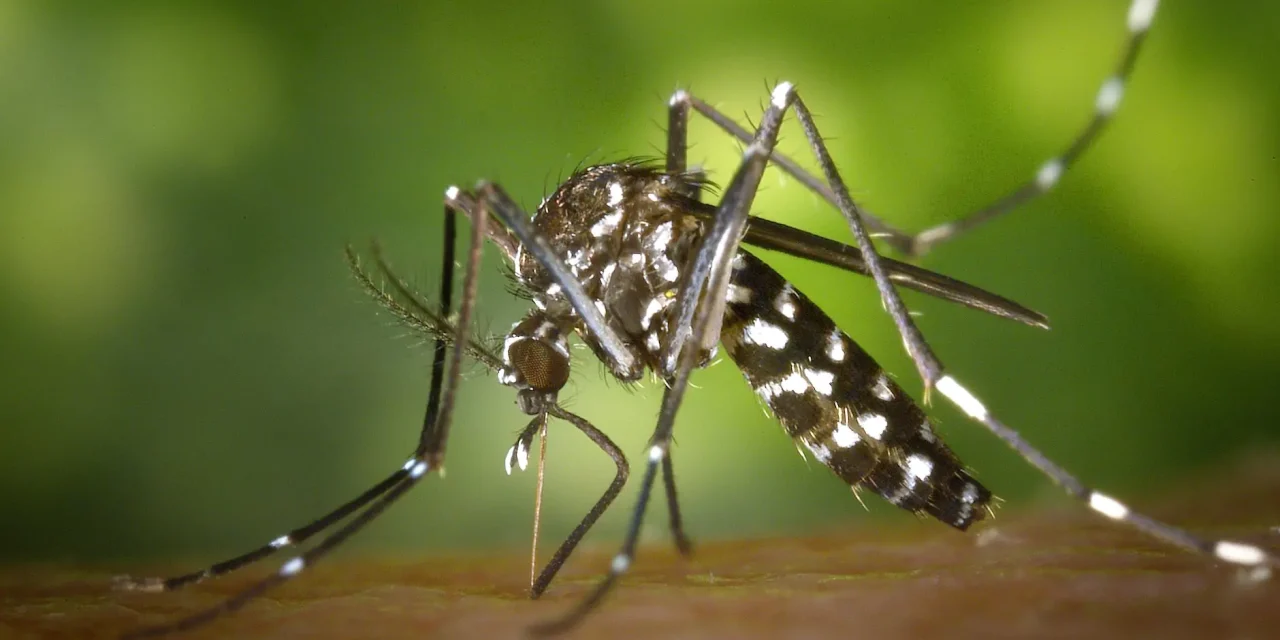Dengue fever is a mosquito-transmitted infection that can cause severe flu-like symptoms as well as potentially fatal consequences.There has been a significant increase and public health concern in dengue fever cases in Ghana.The disease is caused by the dengue virus, which is predominantly transmitted by Aedes mosquitos, specifically Aedes aegypti.
Dengue fever causes a variety of symptoms, ranging from minor flu-like symptoms to serious life-threatening consequences. It’s critical to remain aware and take precautions as the number of cases increases.
The basic steps of dengue, its symptoms, preventative measures, and the need of community action are all covered in this article.
Symptoms of Dengue Fever
Symptoms of dengue fever may resemble those of the flu. In order to manage dengue fever and avoid serious complications, early detection and prompt medical intervention are essential. Get medical help right away if you think you may have dengue fever.
Symptoms that are frequently observed include:
Early Stage I (1-3 days)
The first few days following a mosquito bite are when the early stage of dengue fever develops. A rapid, high fever that frequently reaches 40°C characterizes this stage. Severe headaches, terrible discomfort behind the eyes, fatigue, and weakness are some possible side effects.
Mid Stage (3-7 days)
Other symptoms begin to appear as the infection moves into the mid stage, usually from the third to the seventh day. On the third or fourth day, a measles-like skin rash could develop. During this phase, nausea, vomiting, and light bleeding—such as nosebleeds or gum bleeding—
are also frequent. Individuals may have an inability to eat and a fever that fluctuates, sometimes going down and then back up.
Later Stage (Severe Dengue or Dengue Hemorrhagic Fever) (5–8+ Days)
Severe cases of dengue fever, sometimes called dengue hemorrhagic fever, typically appear after the fifth day and represent a critical stage of the infection. serious stomach discomfort, continuous vomiting, and severe bleeding from the nose, gums, or beneath the skin are typical symptoms of this stage.
Causes and Risk Factors
Understanding the causes and prone areas is crucial for the prevention and management of dengue fever. Environmental, demographic, socioeconomic, and clinical factors can be used to broadly classify these causes and risk factors.
The transmission of dengue fever is largely influenced by environmental variables. The most important risk factor is probably the presence of stagnant water surrounding homes, as studies have shown that it roughly five times increases the likelihood of infection.
Next in line are flower pots and open water containers found in homes, which offer perfect breeding sites for Aedes mosquitoes, the main dengue vectors. Water pools and old tires left outside can collect rainfall and act as mosquito breeding grounds, among other environmental risk factors.
An additional element influencing the risk profile of dengue fever is demographics. Age is an important component; the largest risk group is those between the ages of 16 and 20.
It’s interesting to note that women seem to be more prone to infection than men. The risk of contracting dengue fever is greatly influenced by socioeconomic variables. Vulnerability is increased by living in subpar housing conditions, such as homes with insufficient mosquito protection.
One important risk factor for severe dengue is prior exposure to the dengue virus. Severe consequences are more likely to occur in cases of secondary dengue infections, which are caused by a different strain of the virus than the first illness.
Clinical factors become very important in determining how severe a dengue infection will be. There is a larger chance of severe dengue when certain symptoms like headache, sore muscles and joints, vomiting, stomach pain, diarrhea, and exhaustion are present. Age under 18 and respiratory symptoms have been found to be important risk factors for severe results.
Prevention and Control Measures
To protect yourself and your community:
Preventing and controlling dengue fever primarily involves avoiding mosquito bites and eliminating mosquito breeding sites. To avoid mosquito bites, it is important to use insecticide-treated bed nets, wear protective clothing, and apply mosquito repellents. These measures can significantly reduce the chances of being bitten by mosquitoes, especially during peak mosquito activity times.
Eliminating mosquito breeding sites is crucial because mosquitoes need water to breed. To achieve this, it is essential to remove any sources of standing water from your home and surrounding areas. Covering water storage containers and removing stagnant water around homes can prevent mosquitoes from laying eggs. Properly disposing of items that can collect water, such as tires and bottles, is also important to minimize breeding grounds.
Enhancing environmental hygiene further contributes to mosquito control. Covering drains and gutters and maintaining clean surroundings can help reduce the risk of mosquito breeding and, consequently, the transmission of dengue fever.
Dengvaxia is a vaccine available in some countries, recommended only for those with a confirmed previous dengue infection.
What to Do If You Suspect Dengue Fever
If you’re experiencing symptoms, seek medical attention immediately. A healthcare professional can diagnose dengue fever with a blood test and provide guidance on treatment.
There is no specific treatment for dengue fever, but rest, hydration, and pain relief medication can help manage symptoms. In severe cases, hospitalization may be necessary to monitor and treat complications.
Stay Safe!
The risk of dengue fever can be considerably decreased in both individuals and communities by being aware of the symptoms and taking preventative measures to avoid mosquito bites. To combat this potentially serious disease, personal vigilance along with public health initiatives is crucial.





